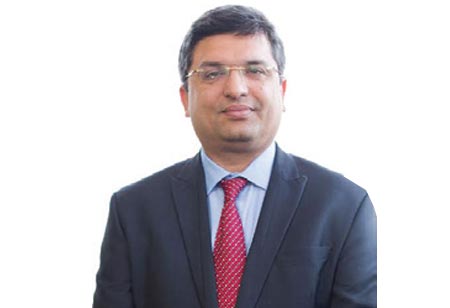How IoT Can Improve India's Agricultural Production & Food Security
By Rishi Mohan Bhatnagar, President, Aeris Communications

Rishi Mohan Bhatnagar, President, Aeris Communications
An established thought leader in the ‘Iot and Digital Space,’ Rishi has consistently delivered sustainable revenue growth in the Smart City initiatives and other digital transformation programs
By 2050, the world’s population is set to be a third larger than it is today, reaching 9.7 billion people, the United Nations World Population Prospects report suggests. To meet this growth and properly feed the growing population, global food production must increase by a whopping 70 percent.
India too needs to step up its food production and processing practices to meet its own demand and for export needs. Part of the answer to the problem of how food producers become 'smarter, leaner and faster' could lie in new technology, and particularly IoT. IoT monitoring technology is already helping producers to meet very strict import regulations. The need of the hour is to expand use cases and build and deploy solutions that can help India move towards food security and sustainable development.
IoT has been making deep inroads into sectors such as manufacturing, health-care and automotive. When it comes to food production, transport and storage, it offers a breadth of options that can improve India’s per capita food availability. Sensors that offer information on soil nutrient status, pest infestation, moisture conditions which can be used to improve crop yields over time.
Precision agriculture which reduces wastage of water and nutrients with accurate application is another area where IoT can help. Through sensors, just the right amount of water can be added to the roots and the right amount of organic inputs added to ensure desirable levels of crop growth without contaminating the soil with excess concentration of nutrients.
In a lab situation, precise micro-climatic conditions including parameters such as soil electrical conductivity can be created to measure the impact of each parameter on plant growth. It can also be used to alter various crop traits over a period of time. A shocking statistic reveals that in India, around 21 million MT of wheat rots each year. This is almost equal to what Australia produces in a year. When one factors in the amount of water used to grow these crops, the problem becomes even more a matter of concern.
Thanks to cold chain monitoring techniques and improved storage monitoring, the amount of agriculture produce wasted can be reduced significantly. With sensors, storage and transport practices can be improved while improving the shelf life of produce. All this can be done with minimal human intervention. Sensors can generate alerts as and when the environment deteriorates avoiding rotting or infestation by rodents or pathogens.
“Sensors that offer information on soil nutrient status, pest infestation, moisture conditions which can be used to improve crop yields over time”
IoT Sensors can also be mounted on farm animals. Farmers can use this data to check on the health and well-being of livestock, as well as the ambient environment. It could notify a farmer that an animal is sick, thereby preventing the spread of disease. Controllers can manage autonomous or self-driving tractors from a remote location thereby providing significant cost and time savings.
A piece of land that offers a good harvest represents a good balance of various elements including some I have mentioned above. IoT comes handy in keeping all these elements at an optimal level so as to ensure the best functional synergy and environment friendly output.
Beyond Fields
Agricultural produce is quite vulnerable during transit. Here again, sensors and micro-environments can ensure safe transport and prevent any wastage. How animals and plants Adapt to Survive in Their Unique Environments?
IoT enabled smart farming is good for the environment too. In addition to reducing wastage of organic nutrients and water, sensors can also warn farmers about any pest infestation of their fields well in advance so that micro and localized measures can be adopted to contain the infestation with minimal environmental impact.
A country like Israel which is a major exporter of agro-tech remain a huge champion of IoT. Agritech IoT in Israel is a multi-billion dollar opportunity for local startups and the government and the private sector have been encouraging innovation using IoT.
A study conducted in the United States found that following use of IoT on the average farm, crop yield increased by 1.75 percent, energy costs dropped $7-13 per acre, while water use for irrigation fell by eight percent. In India also we have seen some innovative projects take off. Most of these projects are in areas which are immediate pain points for Indian farmers. Like there is one IoT project directed towards managing pump sets to prevent wastage of water.
India just needs to focus a bit more. We have the resources and wherewithal to achieve food security. We need to bring in more focus and tie-in an enabling ecosystem to deliver results. This can be backed by a bit of creative thinking and tech application. With a little more imagination, we can do a lot more.




